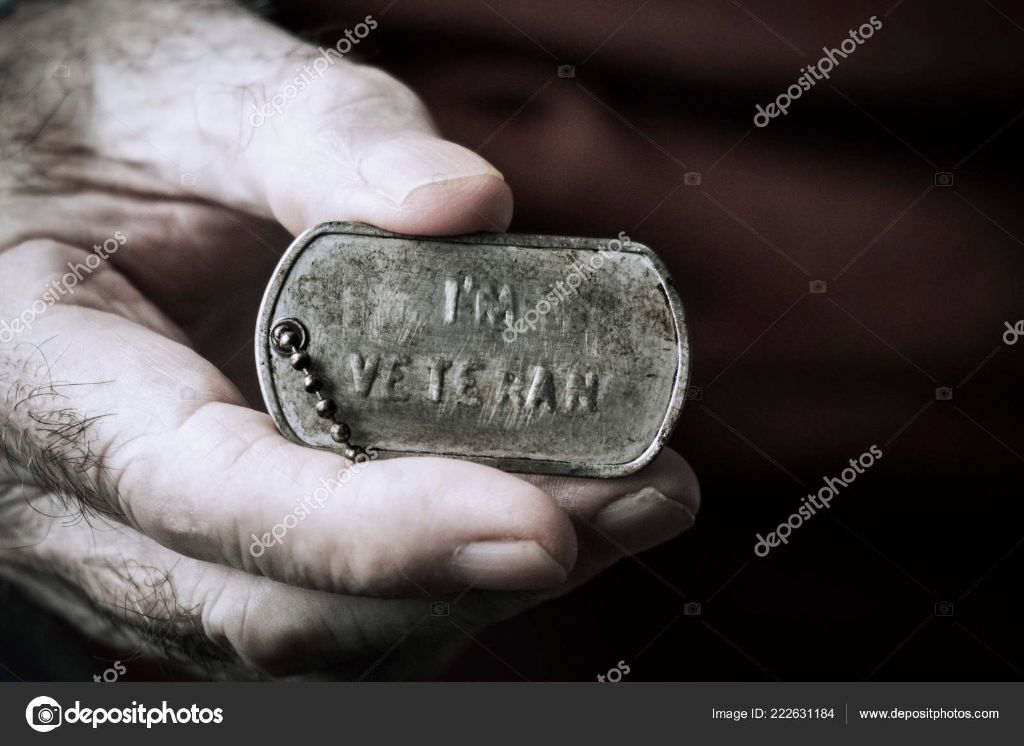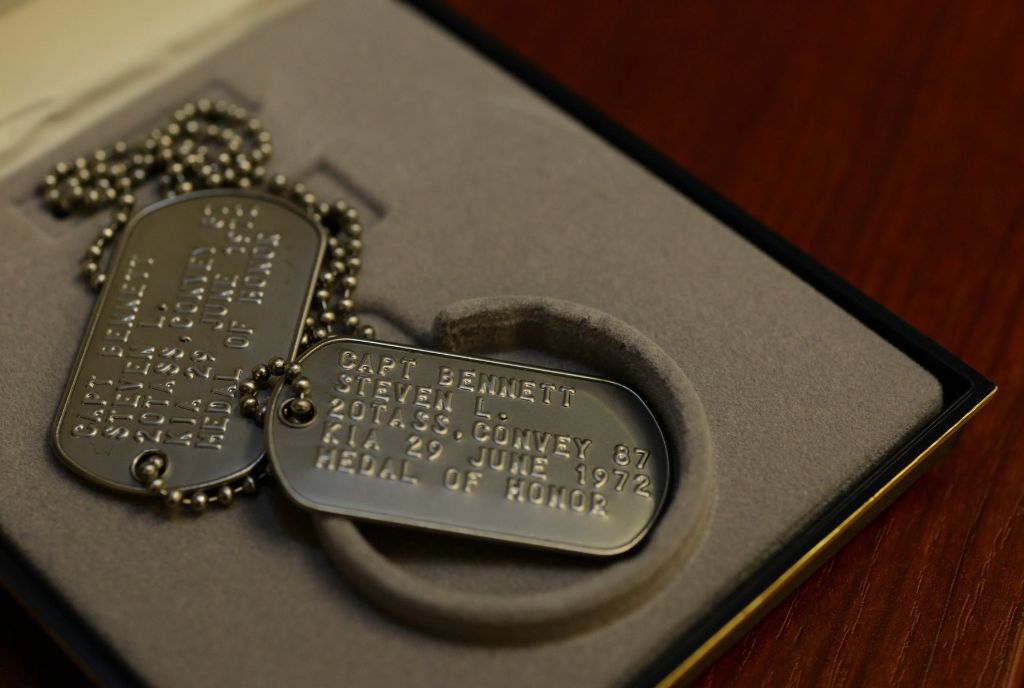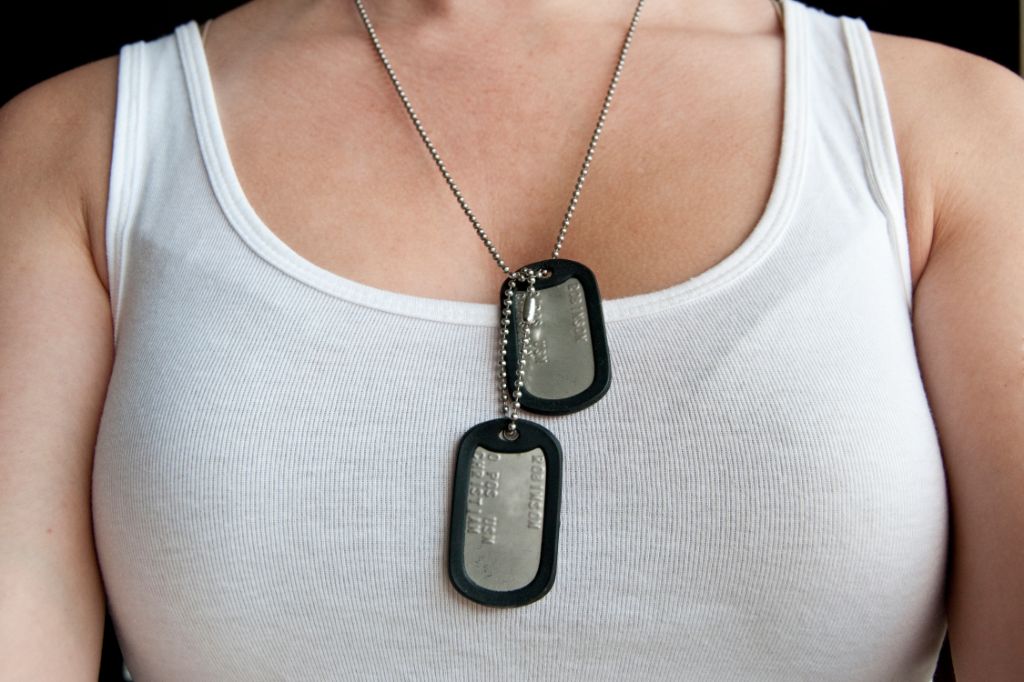Introduction
Military dog tags are identification tags worn by members of the armed forces. They typically contain basic personal information about the service member and are intended to quickly identify personnel in the event of death or injury. The use of identification tags dates back to the mid-19th century during the American Civil War, when some soldiers began creating their own informal identification marks. Over time, the military formally adopted the use of standardized identification tags, now commonly known as dog tags.
Today, dog tags contain essential pieces of information about a service member. This usually includes the person’s full name, service number, blood type, and religious affiliation. Other details like allergies, medical alerts, branch of service, and country of citizenship may also be included. The tags allow medical personnel and commanding officers to quickly identify personnel and access important medical information when needed on the battlefield or in an emergency situation.
Name
A soldier’s full name is engraved on their dog tags. This includes their first name, middle initial, and last name. The name on dog tags allows for quick identification of a soldier if they become injured, killed, or missing in action (Source). Having the full name is important in the event the soldier’s remains need to be identified or their next of kin needs to be notified. The name is typically engraved in all capital letters to ensure legibility.
Service Number

The service number on military dog tags is a unique identifying number assigned to each service member upon enlistment (Source). When the U.S. military first began using service numbers in 1918, they were randomly assigned. However, in 1969, the military switched to a serial number system that was based on the date of enlistment. The first two digits referred to the year of enlistment, the next two digits were the calendar week, and the last four digits were just a regular serial number (Source). The service number was an important way for the military to keep track of service members and access their records.
Blood Type
A soldier’s blood type is included on their dog tags in case they are severely injured on the battlefield and need an emergency blood transfusion. This allows medics to quickly determine the soldier’s blood type and administer compatible blood without needing to run time-consuming tests. The common blood types of A, B, AB, and O will be listed on the dog tags.
According to discussions on Reddit, including blood type on dog tags was mandated by Congress so that military doctors would have this critical medical information readily available for wounded soldiers who couldn’t communicate their blood type (source). Other sources confirm that blood type is standard on all military dog tags to aid medics in providing urgent care to injured service members (source).
Religious Preference
The military dog tags include an optional designation for the service member’s religious preference. This allows the appropriate chaplain to be called if needed for rituals or spiritual counsel. Some common religious designations include Christian denominations like Catholic, Baptist, Methodist, as well as broader terms like Protestant or Christian. Other faiths are also represented, such as Jewish, Muslim, Hindu, Buddhist, and Wiccan. Even atheist or agnostic can be specified.
According to the ACLU, the Department of Defense recognizes over 200 religions and denominations. Controversy has arisen at times over newer or lesser known faiths being included, but the courts have generally ruled this unconstitutional religious discrimination. The military aims to accommodate all belief systems.
The religious preference section of dog tags is optional. Service members can leave it blank if preferred. The information serves an administrative function rather than being an expression of faith. Still, some soldiers choose to display their religion with pride.
Allergies/Medical Alerts
Military dog tags often have an allergy or medical alert notification on them to inform medical personnel about a soldier’s medical conditions. This is an optional element on dog tags that can help with proper medical treatment. Some examples of common allergy and medical alert messages include:

The tags allow up to 6 characters for an allergy or medical alert. Some common allergies that might be listed include PENIC for penicillin, BEE STG for bee stings, NKLN for nikeln allergy. Other medical alerts could include DIABET for diabetes, EPILEPSY, PTSD, ASTHMA and more (source: https://www.pawdentify.com/products/medical-alert-allergy).
Listing a specific allergy can help medical responders provide the right treatment and avoid medications that may trigger an allergic reaction. It also quickly alerts them to conditions like diabetes or epilepsy that require rapid, specialized care (source: https://www.mydogtag.com/custom-dog-tags/medical/allergy). The medical alert information on dog tags provides crucial information when a soldier is incapacitated and unable to communicate.
Branch of Service
The specific branch of the military the soldier serves in is engraved on the dog tags. The standard options are Army, Navy, Air Force, Marine Corps and Coast Guard.
For example, dog tags for Army soldiers would have “ARMY” engraved. Navy sailors’ tags would read “NAVY”. Likewise for Air Force (“AIR FORCE”), Marines (“MARINE CORPS”) and Coast Guard (“COAST GUARD”).
Knowing the military branch helps ensure the dog tags get returned to the correct branch if they are ever separated from the soldier. The issuing branch also maintains service records connected to the service number on the dog tags.
Country of Citizenship

A soldier’s country of citizenship is listed on their dog tags. This helps identify the soldier’s nationality if they are killed in action or become a prisoner of war. According to the U.S. Army’s regulations on dog tags in AR 600-8-14, the country of citizenship is abbreviated using the Defense Information Systems Agency country codes [1]. For example, “US” would be listed for a U.S. citizen.
Knowing a soldier’s nationality allows the military to properly notify next of kin and follow protocols if the soldier becomes a casualty. It also ensures they are treated as a prisoner of war rather than a spy if captured by enemy forces. Listing citizenship facilitates repatriation of remains if killed in action.
Additional Information
In addition to the standard name, service number, blood type, and religious preference information, military dog tags may also contain other optional personal data such as:
Social Security Number: While this was once common, social security numbers are no longer included on dog tags due to identity theft concerns.
Geneva Conventions Category: This indicates whether a service member is considered a combatant or noncombatant under the Geneva Conventions and is important for determining POW status if captured. Combatants would have a “C” and noncombatants an “S” (source: https://www.defense.gov/News/Inside-DOD/Blog/article/2340760/dog-tag-history-how-the-tradition-nickname-started/).
Emergency Contact Information: Some dog tags may list a service member’s next of kin or emergency contact information.
Allergies or Medical Conditions: Critical medical information like life-threatening allergies may be included.
Special Instructions: Other instructions like organ donor status could be engraved on dog tags.
Conclusion

In summary, key information found on military dog tags includes the service member’s name, service number, blood type, religious preference, allergies or medical alerts, branch of service, and country of citizenship. Additional information like social security number may also be included. The main purpose of dog tags is to provide critical identification details in case a service member is killed or injured in action. Proper identification allows the military to notify next of kin and handle remains respectfully. Dog tags have been an essential part of the U.S. military since the Civil War, providing a way to identify those who made the ultimate sacrifice in service to their country. Their enduring tradition and instant recognizability make them an iconic symbol of American military service.
